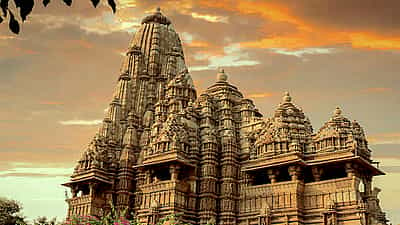( स्वर्णमंदिर को खालिस्तानियों से मुक्ति दिलाने में महत्वपूर्ण भूमिका निभाने वाले भारतीय सेना की 15 कुमाऊ बटालियन की एल्फा कम्पनी देश की एकमात्र ऐसी कम्पनी है जिसने 3 अशोक चक्र जीते हैं। इसके बाद इसका नाम अशोक चक्र कम्पनी रख दिया गया )
ऑपरेशन ब्लू स्टार के समय जब आर्मी की ब्रिगेड ऑफ द गार्ड और गढ़वाल कंपनी के सैनिक अधिक शहीद हो गए तो 15 कुमाऊँ को आगे भेजा गया ।
6 जून 1984 को 15 कुमाऊं की एल्फा बटालियन की प्रथम यूनिट के 5 सिपाही सुबह 5:30 पर स्वर्ण मंदिर में घुसने लगे। आतंकवादी ऊपर से गोलियां बरसा रहे थे।
सबसे आगे चल रहे चुरु निवासी रणजीत सिंह गौड़ सबसे पहले शहीद हुए। उन्हें बाद में शौर्य चक्र मिला । दूसरे और तीसरे नंबर के जवानों ने ओट ले ली। एलएमजी के साथ झालरापाटन के नायक निर्भय सिंह सिसोदिया चौथे नंबर और स्टैंनगन के साथ जोधपुर के अमर सिंह भाटी पांचवें नंबर पर चल रहे थे।
गोलियों की परवाह नहीं करते हुए निर्भय सिंह आगे बढ़े लेकिन गोलियों की बौछारों ने उनका दाहिना बाजू उड़ा दिया। तब तक वे तहखाने के पास पहुंच गए और दूसरे हाथ से ग्रेनेड फेंका, जिससे वहां धुआं हो गया। अमर सिंह भाटी ने भी दो ग्रेनेड फेंके । धुंए की आड़ में निर्भय सिंह ने एक हाथ से ही एलएमजी से फायर शुरू किए और भिंडरावाले सहित कई आतंकवादी मारे गए । इस बीच सेना की टैंक का एक गोला स्वर्णमंदिर की छत पर लगा। वहां से मलबा गिरने से निर्भयसिंह की दबकर मौत हो गई। इसके बाद तहखाने से भी फायरिंग बंद हो गई और भारतीय सेना ने स्वर्णमंदिर पर पूरा कब्जा कर लिया। रात 9 बजे ऑपरेशन खत्म हो गया...
सेना की 15-कुमाऊ की एल्फा कम्पनी देश की एकमात्र ऐसी कम्पनी है जिसको तीन अशोक चक्र मिले हैं।
During the Operation Blue Star on 6 June 1984, he provided cover for his company commander from heavy firing by the Sikh militants using medium machine guns. Sensing danger to his company from a light machine gun in a pot hole, Singh charged towards the gun. Although he suffered bullet shots to his legs, he crawled to reach the pot hole and lobbed a grenade into the basement, but exposed himself to heavy firing and succumbed to his injuries.
Naik Nirbhay Singh Sisodiya was born on 1 May 1958 in Hindu Rajput Family of Mr Nand Singh Sisodiya, who was Aide-de-Camp to the Tehsildar and Mrs Mata Basant Kanwar, a simple and religious lady, in Jhalawar, Rajasthan. Naik Nirbhay Singh was the eighth child amongst a family of five brothers and four sisters. His elder sisters are Shashikala Sisodiya, Hansa Sisodiya and Vijya Sisodiya and the name of two brothers are Kalyan Singh Sisodia and Abhay Sigh Sisodia respectively. He was a keen sportsman and his early education took place in Jhalawar where he passed his IX class from Government Higher Secondary School.
From childhood, he was determined to join the forces so after his class IX he enrolled himself in the Army and was posted to 15 Kumaon Regiment.
Operation Blue Star
Former Prime Minister, Mrs. Indira Gandhi launched Operation Blue Star, military operation in order to establish control and evacuate the temple complex.
During the operation, Singh's company was given the task to clear an important building complex which was heavily fortified and strongly held by fierce terrorists. Naik Nirbhay Singh was chosen as the Light Machine Gun Detachment Commander of ‘A’ Company. As the company moved towards, they came under heavy fire from the defenders of Harmandir Sahib. As a result, they had to halt their actions. Singh's Company Commander decided to move towards the building all by himself. Naik Nirbhay Singh set to provide cover to his Company Commander, plunged forward and mounted a Light Machine gun. The hidden militants were firing on them from the building. Singh continued to remain in the open and kept firing to provide the cover. While firing, he realized danger to his Company Commander from a light machine gun mounted in a porthole. He marched towards the porthole exposing himself to grave danger. In the action, he was hit by bullets in his leg but his objective remained unfettered. After injured, he still crawled towards the porthole and silenced the machine gun with a hand grenade. But in the action, he was hit by a blaze of bullets for the second time. This proved fatal and he succumbed to his injuries.
Naik Nirbhay age only 26, didn't care his own safety and made a sacrifice for the army. He laid down his life in highest traditions of the Indian Army. He lived true to his name, fearless.
For his extraordinary bravery, cool courage and supreme sacrifice for his nation Naik Nirbhay Singh Sisodiya was posthumously awarded with the Ashoka Chakra, India's highest gallantry award during peacetime.
Ashoka Chakra award Citation
The Citation of Ashoka Chakra posthumously given to the martyr Nayak Nirbhay Singh Sisodiya on 23 March 1985 which was taken by his mother Lt. smt. Basant Kanwar.










